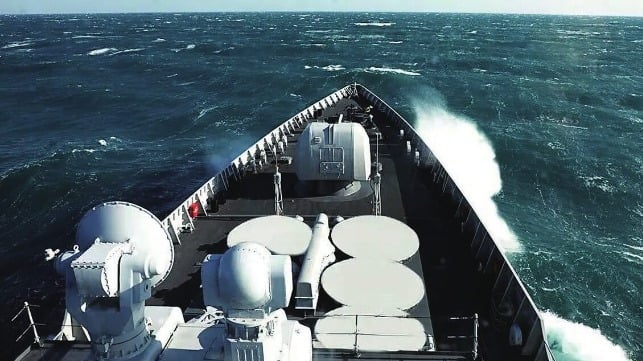U.S. Navy's Top Officer Plans for Confrontation With China by 2027

The U.S. Navy's top officer is urging the force to get ready for a fight in the Pacific by 2027, and to prepare with what it has on hand.
"We cannot manifest a bigger traditional Navy in a few short years," wrote Chief of Naval Operations Lisa Franchetti in her newly-released Navigation Plan, the CNO's strategic guidance for the fleet. "We will continue to prioritize readiness, capability, and capacity— in that order. We must recognize that the Navy faces real financial and industrial constraints."
Her front and center focus is on preparing for conflict with China, centered on a much-debated timeline for a potential invasion of Taiwan. "The Chairman of the People’s Republic of China (PRC) has told his forces to be ready for war by 2027 — we will be more ready," she wrote.
The challenge is substantial. China's naval fleet is the largest in the world by fleet size, and it is rapidly modernizing. The world's largest shipbuilder, CSSC, is at the disposal of the PLA Navy, and the Chinese defense industrial base "is on a wartime footing," Franchetti said. The PLA has also worked hard to integrate its Navy, Rocket Force, Aerospace Force, Air Force and Cyberspace Force into a joint "warfighting ecosystem specifically designed to defeat ours."
To confront this growing challenge, Franchetti wants the Navy to focus on seven areas where it can make gains "in the fastest possible time with the resources we influence." There are no new initiatives or organizational structures, just a focus on making the most of what is available within three years' time. The top line item is eliminating maintenance delays across the board, freeing up more ship-days for possible deployment. The ambitious target is to achieve a minimum "combat surge ready" status for 80 percent of all ships, subs and aircraft by 2027.
"We will only accomplish this by getting platforms in and out of maintenance on time," wrote Franchetti.

that matters most
Get the latest maritime news delivered to your inbox daily.
The next objective is to roll out robotic and autonomous systems at meaningful scale. The Navy leadership has absorbed the lessons of recent conflicts in the Black Sea and the Red Sea, where unmanned drones and bomb boats have played a prominent role in combat. Franchetti's goal is to have robotic and autonomous systems available "for routine use by the commanders who will employ them" by 2027, with "mature capabilities" integrated into all deploying carrier strike groups.
Manning and servicemember quality of life also stand out as key priorities. The Navy was short by about 22,000 enlisted personnel at the start of the year, even after reducing minimum recruiting qualifications and introducing retention incentives. Franchetti wants to eliminate the manning gap by 2027 and achieve 95 percent fill for billets in deploying units. That initiative includes substantial changes in the way that the Navy provides for enlisted sailors: Franchetti wants to eliminate involuntary shipboard berthing when in homeport, improve housing options, and limit how long new sailors can be assigned to shipyard periods.
